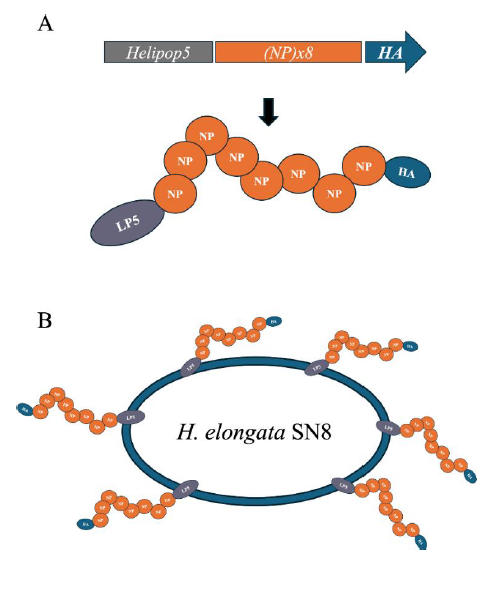Cell Surface Engineering as a Tool to Transform the Moderately Halophilic Halomonas elongata into a Nutritious Single-Cell Eco-Feed
Keywords:
Cell surface engineering, Feed additives, Essential amino acids, Self-cloning, Halomonas elongataAbstract
Cell surface engineering is a technology used to generate versatile microbial cell factories for various applications. We previously developed a cell-surface display system for Halomonas elongata OUT30018, a moderately halophilic bacterium that can be used as a cell factory to produce valuable amino acids and their derivatives. In this system, Lipoprotein 5 (LP5), an outer membrane protein encoded by H. elongata OUT30018’s Helipop5 gene, is used as an anchor to attach peptides of interest to the outer membrane. The attached peptides are, therefore, displayed on the cell surface. This work aims to use this system to generate a recombinant H. elongata that displays nutrient-rich peptides on the cell surface. Because Methionine (M), Lysine (K), and Tryptophan (W) serve as essential nutrients for fish, we first screened the genome of H. elongata OUT30018 for fragments that encode M-, K-, and W-rich peptides. As a result, a sequence encoding a short M, K, and W-rich peptide was found and was named a nutrient peptide (NP). Subsequently, the DNA sequence that encodes NP was cloned, and plasmids for surface-displaying one to eight repeats of the NP peptide as LP5-NP x1 to x8-HA fusion proteins were constructed. After the correct expression of these fusion proteins were confirmed in E. coli by immunoblot of crude protein extracts with anti-HA antibody, further plasmid constructs were prepared for expressing the LP5-NPx1 or LP5-NPx8-HA fusion proteins in H. elongata OUT30018. Although the constructs were successfully integrated into the genome of H. elongata OUT30018, generating recombinant H. elongata SN1 and SN8 strains, HPLC analysis did not detect any increase in the M, K, and W concentrations in their cell extracts. As the expression constructs were placed under the control of the relatively weak Helipop5 promoter, we are currently working to express this construct under a more potent promoter in the proline-overexpressing H. elongata HN10 previously developed in our laboratory. Proline is an essential amino acid that also functions as a feed stimulant for fish. Therefore, Proline-overexpressing H. elongata equipped with surface-display NP could be used as a single-cell eco-feed for aquaculture. Successful implementation of this strategy will establish a proof-of-concept for a versatile platform technology for displaying peptides on the cell surface of H. elongata for diverse biotechnological applications.

